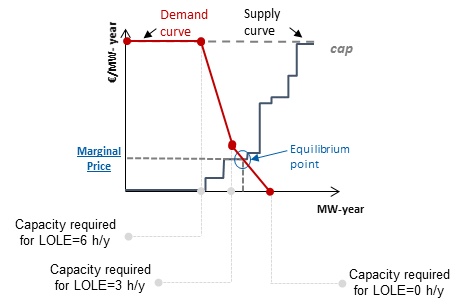1. What is the Capacity Market?
The capacity market is a mechanism by which Terna procures capacity through futures contracts awarded through a competitive bidding process. The rules for market operation are defined in the Regulation and related annexes approved by Italian Ministerial Decree of 28 June 2019. Operators of production units (dispatchable and intermittent) as well as of storage units can participate in the tender organised by Terna. The operators of the capacity selected as a result of the tender:
- must offer capacity on the energy and services markets
- have the right to receive an annual fixed premium from Terna
- must repay Terna the difference, if positive, between the price of the electricity realised on the energy and services markets and the strike price defined by ARERA (the Italian Regulatory Authority for Energy, Networks and Environment).
Plants that use fossil fuels and take part in the Capacity Market cannot have emissions exceeding the limits defined in the market operating rules. Capacity market units (demand-side response) and foreign resources with specific obligations and rights may also bid.


